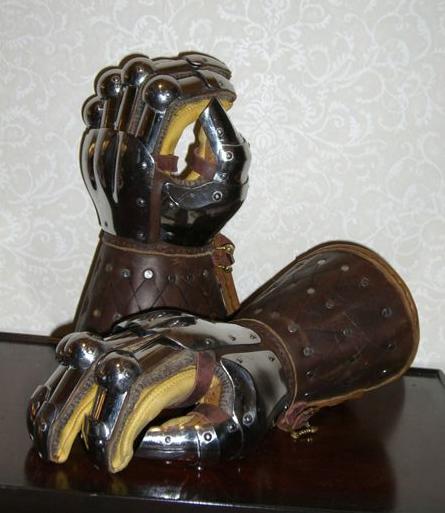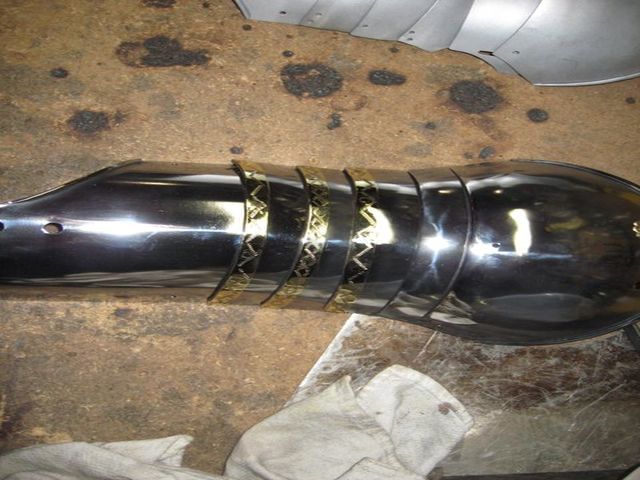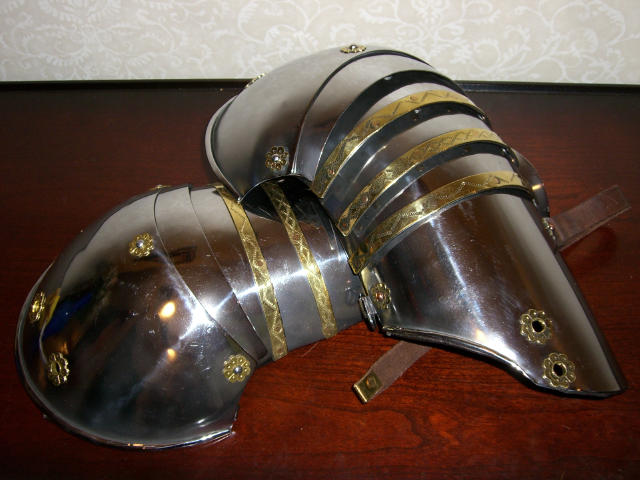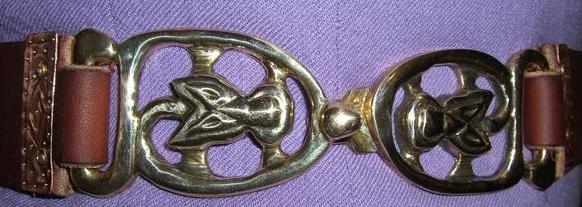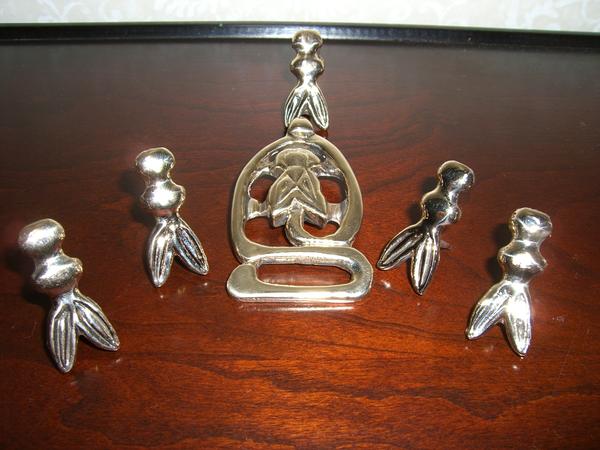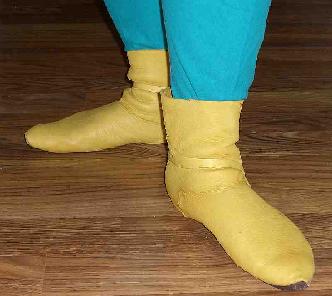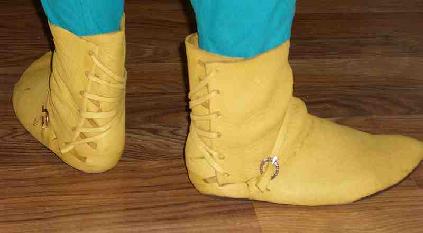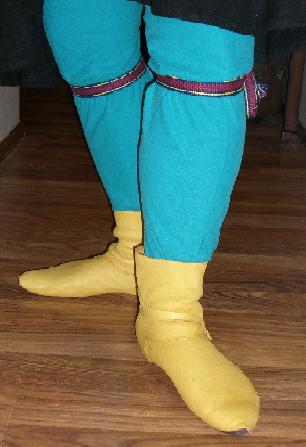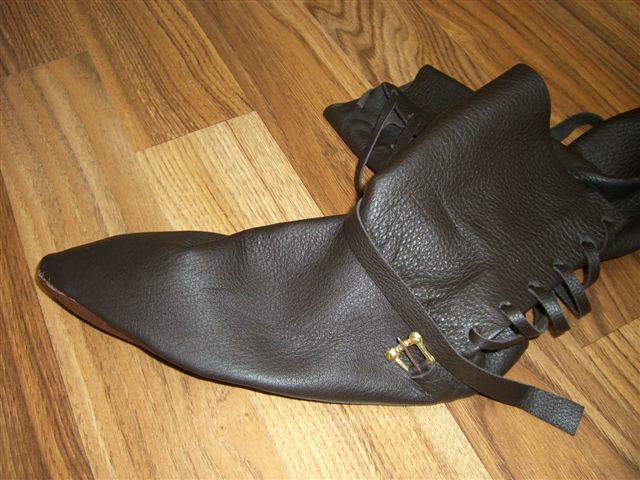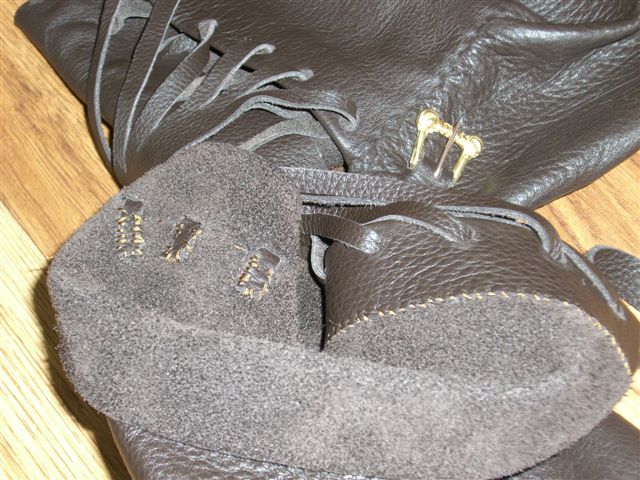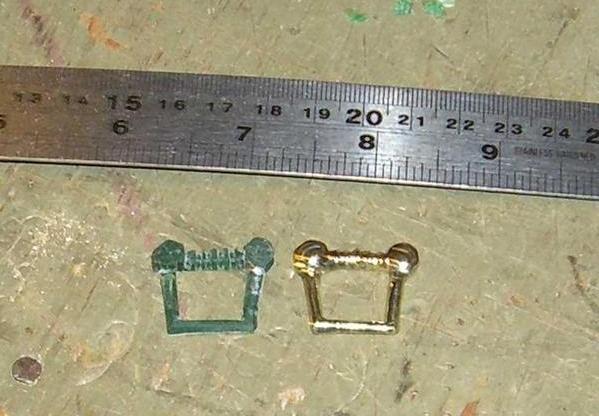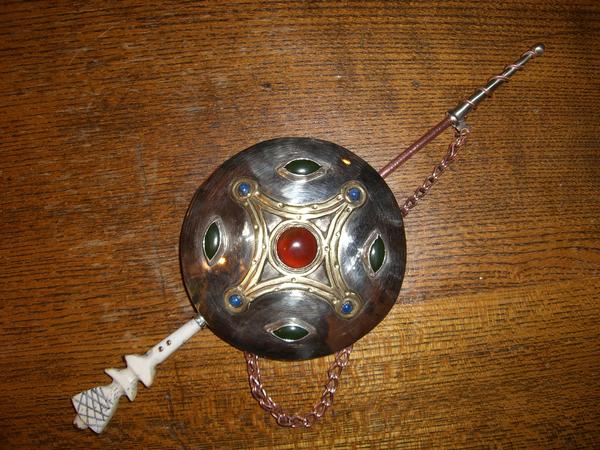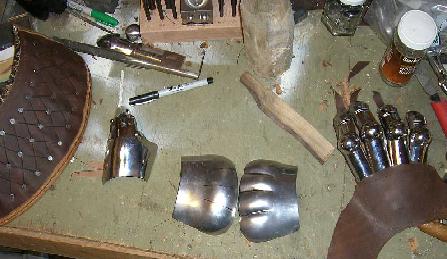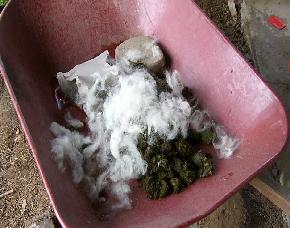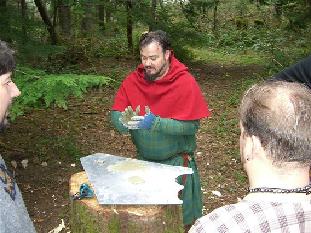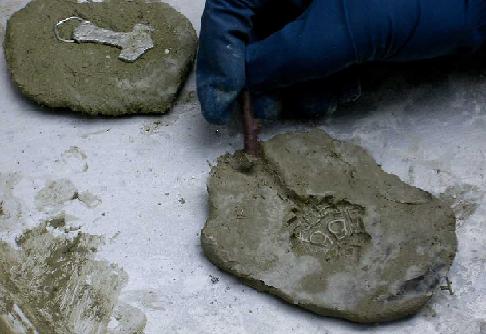Giles de Bois Guilbert

MOST RECENT PROJECTS
14th century finger gauntlets, styled after Battle of Wisby examples
The finished gauntlets.
14th century spaulders
Spaulders in progress
The spring steel has been heat treated and one spaulder is polished. The "latten" trim with engraved wriggle-work is attached. On the left see the bead-blasted finish that I started with. Some additional hardware, straps, and lining before to do before they are finished.
Finished Spaulders
14th Century Gamboised Cuisses
Gamboised cuisses are a padded leg defense in conjunction with maille.
Handcast Sarmatian belt fittings
Bronze buckle and plaques (stylized bees) made for Queen Miranda, July Coronation 2007
Bee buckle
Plaques (bees) and one half of the bee-buckle ready to be attached to the belt.
14th century shoes and buckles, two pairs shown
Patterned on examples seen in the book "Stepping Through Time" and Museum of London's "Shoes and Pattens". Handcast buckles. Leather is handsewn in "edge-flesh stitch" on seams, and in "tunnel stitch" where laces and buckles attach on the inside of shoe.
Inside of shoe showing tunnel stitching
Handcast buckle (right) with carved wax model (left), based on 14th century buckles with trapezoid frame and decorative knops. Example in Museum of London's "Dress Accessories".
Early Anglo-Saxon brooch
Made for Sport of Kings 2007 tournament prize, and won by Sir Kjarten.
A LOOK AT VARIOUS PROCESSES:
The gauntlet project


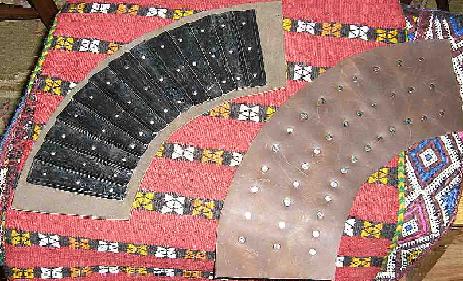
Making crucibles and molds from horse poop & clay: for melting/pouring/casting metal
Clay, horse poop, charmotte, hair/wool and organic matter ready to mix
Forming the Crucibles
A variety of Crucibles ready for use in the forge
Crucibles with molten brass in the forge
Poop/clay molds being made (for Norse pieces)
Out of the mold
THE LIFE AND TIMES OF GILES DE BOIS GUILBERT
Giles was born in the Year of Our Lord 1288, on the Feast of his namesake, at Gilbert’s Wood in Gloucestershire. As second son - from a family long of nobility but short on cash - there was rare likelihood that Giles would ever come into possession of the family estate. He therefore took service with the De Clare family, through Eleanor de Clare and her husband, Hugh de la Spencer the Younger.
This happenstance become a significant factor during Giles’ lifetime, but was bittersweet with equal parts bane and benefit. However it was through this new relationship with Hugh that he learned and profited much, and stood in good graces with King Edward. De Bois Guilbert’s diligent and faithful service was rewarded in 1317 with a baronage. He was also charged by Hugh to be Custos of Gloucester Castle, and to arrest disturbers of the peace in both Gloucester and Worchester. Unfortunately, in 1322, fickle Lady Fortuna turned her wheel and Giles' luck rapidly changed.
Unfortunatly, the barony that had been granted to him was brokered by Hugh from lands that Edward had illegally confiscated in Gower. This, coupled with Hugh’s changing nature and insatiable lust for power, led to a continually widening rift between the two men. The final split came in the fall of 1326 when Edwards’s wife, Queen Isabella, and Roger de Mortimer arrived in England with the force of the Hainaulter family. Their aim? To depose Edward and install Isabella's son as king in his place.
Though called to support Edward II, de Bois Guilbert would not raise arms against the Prince of Wales. Nor could he, in all good conscience, support De Spenser and Edward II because of their recent misdeeds. Giles therefore renounced his baronage. But fate had not turned her back on Giles, for it was this decision (along with his ties to De Clare) that saved his life. In the blink of an eye, fierce attitudes and bloody reprisals ensued toward the De Spensers and their confederates, and England raged.
De Bois Guilbert has since managed to support himself through the tournament, however it proves an unpredictable existence fraught with hazard. Most especially, Giles had become accustomed to the especial privileges that accompanyed a baronage. He now plots to recover this lost lifestyle, even to the extent of proposing marriage to Isolda Throkmorton de Foxley. Wedding such a woman would be a true sacrifice. However it would gain Giles access to the rich Foxley estates and, thereby, return to a luxurious style of living. Sir Simon Throkmorton, with no sons to inherit, has so far been open to Giles suit. As expected, Isolda remains unyielding and highly opinionated on the matter of her inheritance.
The year is now 1327 and, with the Feast of Candlemass behind us, we enter the Holy Lenten season of fasting and prayer. Giles is at Foxley Manor pursuing his bid for Isolda’s hand and (most especially) protecting his interest from any other wolves who may think to style themselves her suitors. He hopes the upcoming Pascal season can include marriage to his intended bride.
In Isolda’s book, he will be praying for a miracle.
UPDATE: Giles has once again gained favour and today stands in good graces with the Crown, and has been granted rank and title as a Baron to the Court. Though this is a prestigious recognition it gains little income, yet could be useful in ongoing negotiations with Sir Simon Throkmorton. Perhaps the fair Isolda will now see fit to yield some of her native contrariness...
LINKS
Armour Archive forum
Foxley Manor A 14th century journal
Gilbert's Wood/ Giles' project blog
File:Example.jpg
